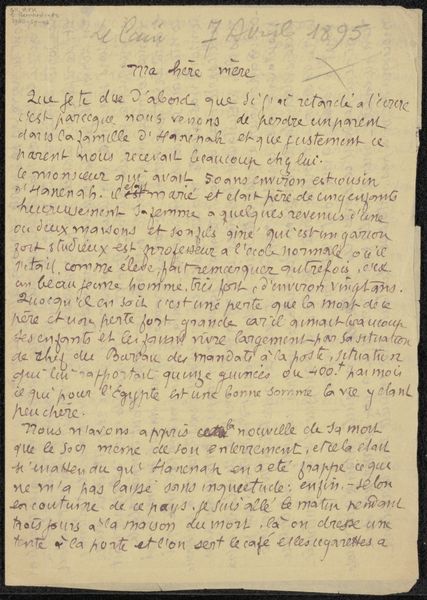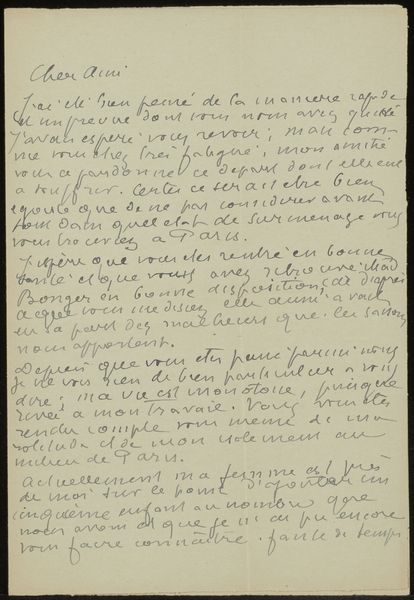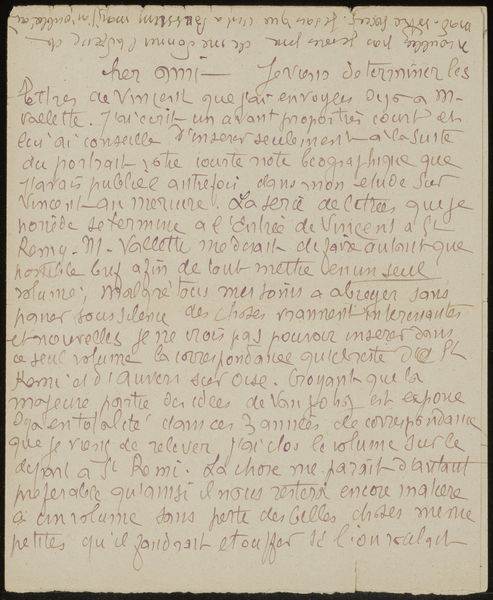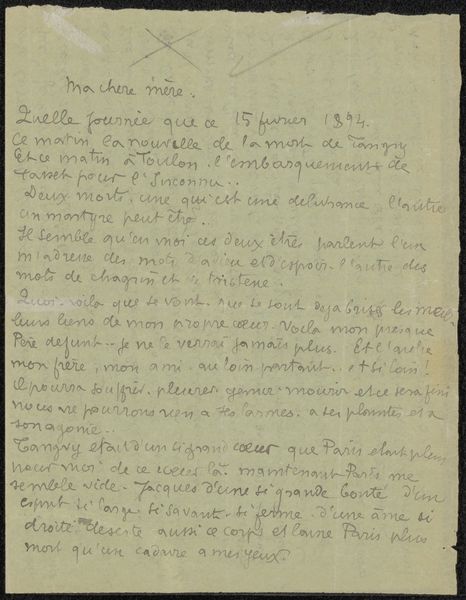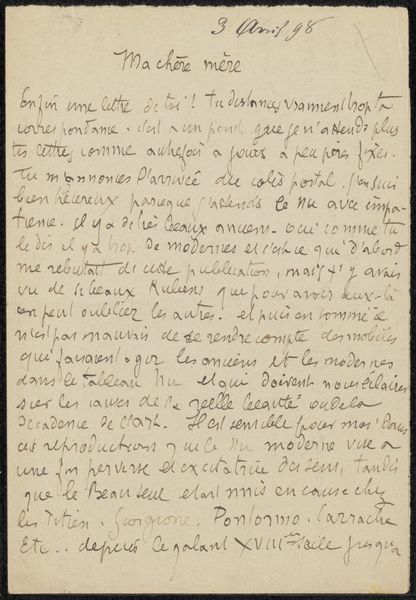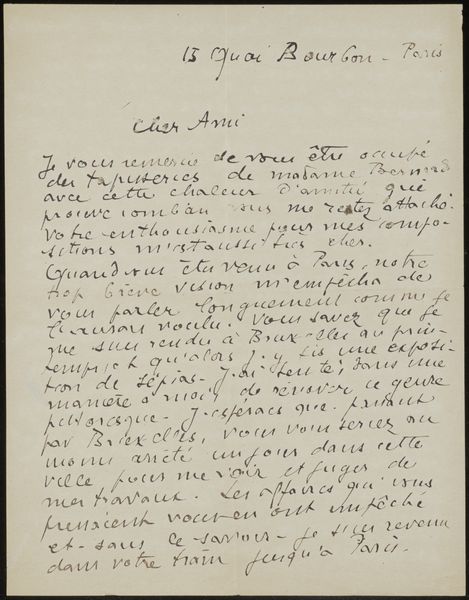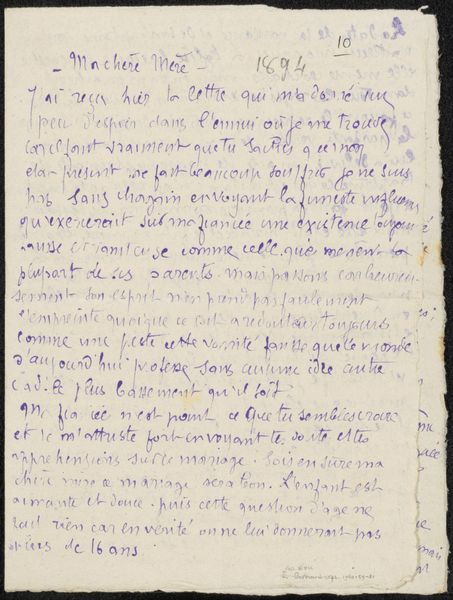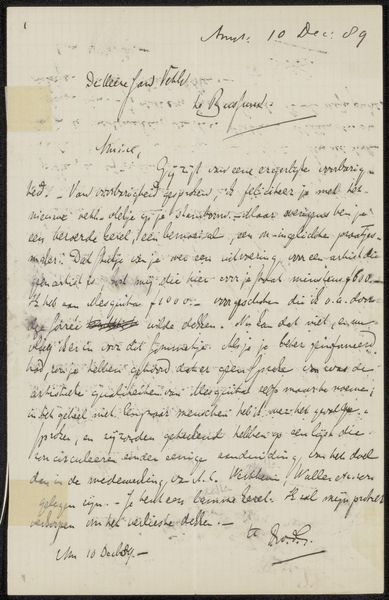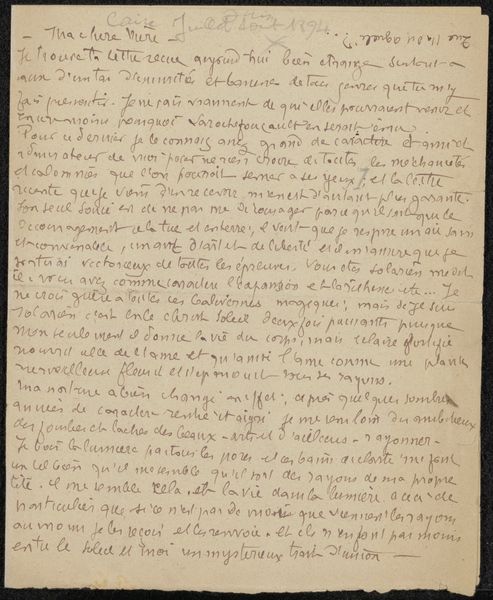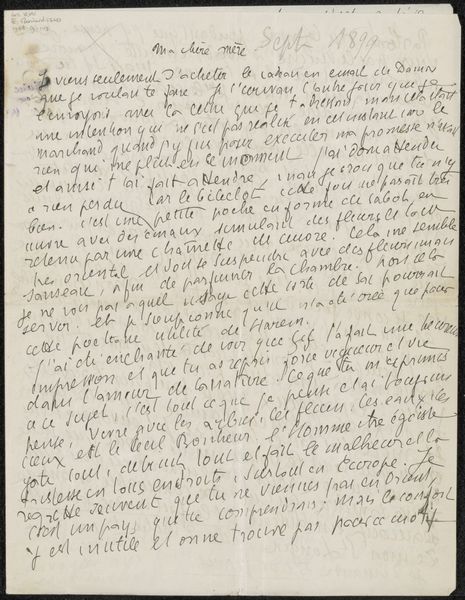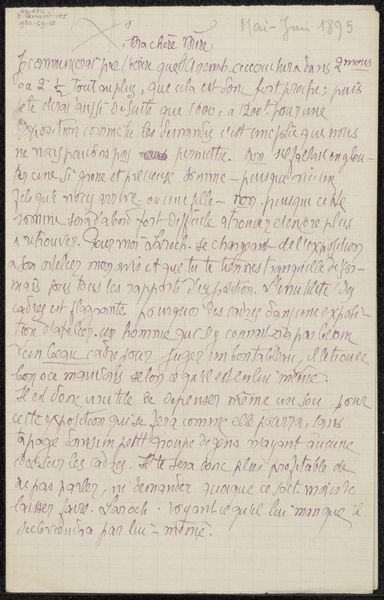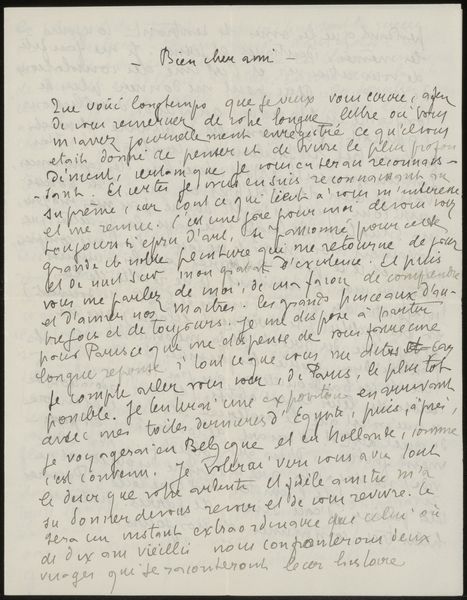
Copyright: Rijks Museum: Open Domain
Curator: We're looking at "Brief aan Emile Ernest Bernard en Héloïse Bernard-Bodin," a drawing from 1878 to 1941 by Emile Bernard. The medium involves ink and pen on paper, hinting at the artist's use of impressionistic style and theme of intimism. Editor: My immediate response is one of intimacy, even vulnerability. The handwriting, the smudges, the way the ink bleeds into the page—it speaks of private thoughts made visible. Curator: Absolutely, its form—or more accurately its format—provides some insight into Bernard’s artistic milieu. Here, semiotics of epistolary structure meet structuralism through handwriting; its textural elements give depth through an everyday approach to drawing on paper with pen and ink. Editor: But beyond the technical aspects, consider the social implications. Letters are, by their nature, about connection. The address to his parents, “Chers parents," situates this work within a deeply personal relationship. Bernard lived during the advent of modernist art; a look at this personal artifact connects the personal and the familial that we understand to this day. Curator: You speak of relationship, and I, of process. Notice how Bernard layers his strokes, creating density in some areas while leaving others sparsely rendered. The varying line weight suggests a dynamism, a flow of thought captured in real time. We're seeing his hand at work, in all its intentionality and happenstance. Editor: And let's acknowledge the power dynamics inherent in a letter from a child to their parents, even an adult child. This could be an appeal, a confession, or simply a moment of connection. Without knowing the specific content of the letter—difficult given the French and its scrawling script—we can only project based on what it tells us through affect. Curator: Perhaps its power lies in its very ambiguity; its openness is reminiscent of minimalist and impressionistic philosophy: reduced content. The interplay of ink, paper, and mark-making provides sufficient ground to explore formal concepts like texture and line within a pictorial space, not to delve into who held more sway within this correspondence. Editor: I would push back slightly, but I see what you mean, but still…to fully appreciate the piece, the intersections between personal relationships, family, and intimacy reflected within, can provide important dialogue with the composition. Curator: I concur. Even formal analysis of those textures invites further research into those elements that you mentioned about familial identity—such as status, or other sociological contexts around parent-child structures. Editor: Indeed! Seeing beyond just form expands what feels like such a personal artifact into far larger narratives about connection and relationship.
Comments
No comments
Be the first to comment and join the conversation on the ultimate creative platform.

